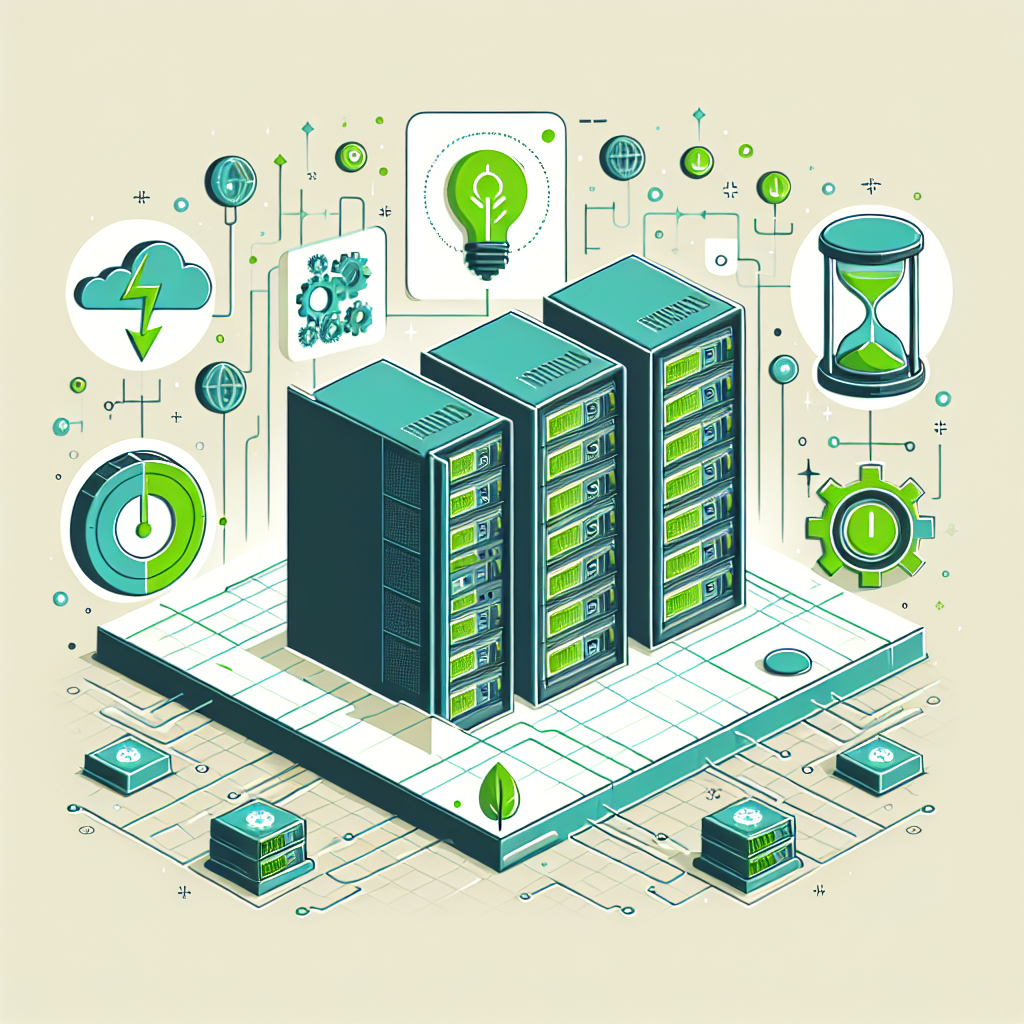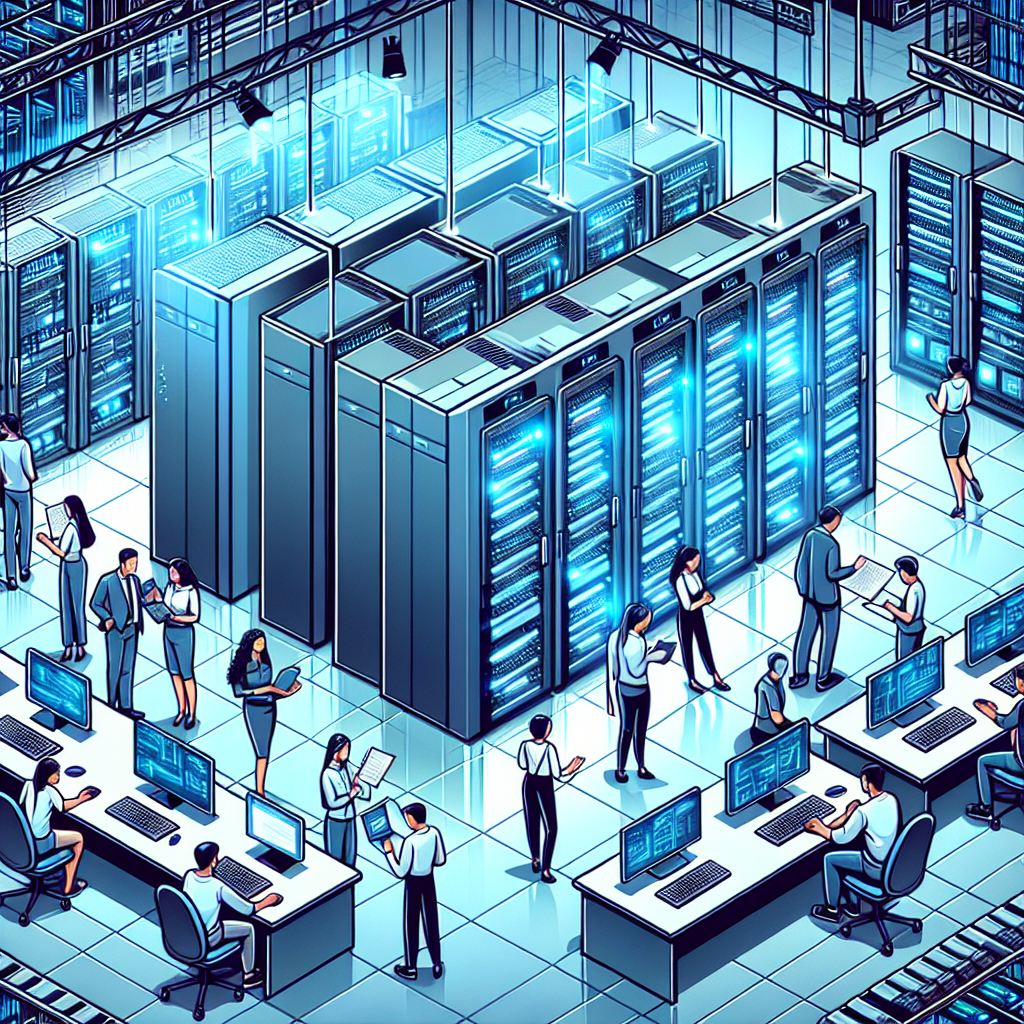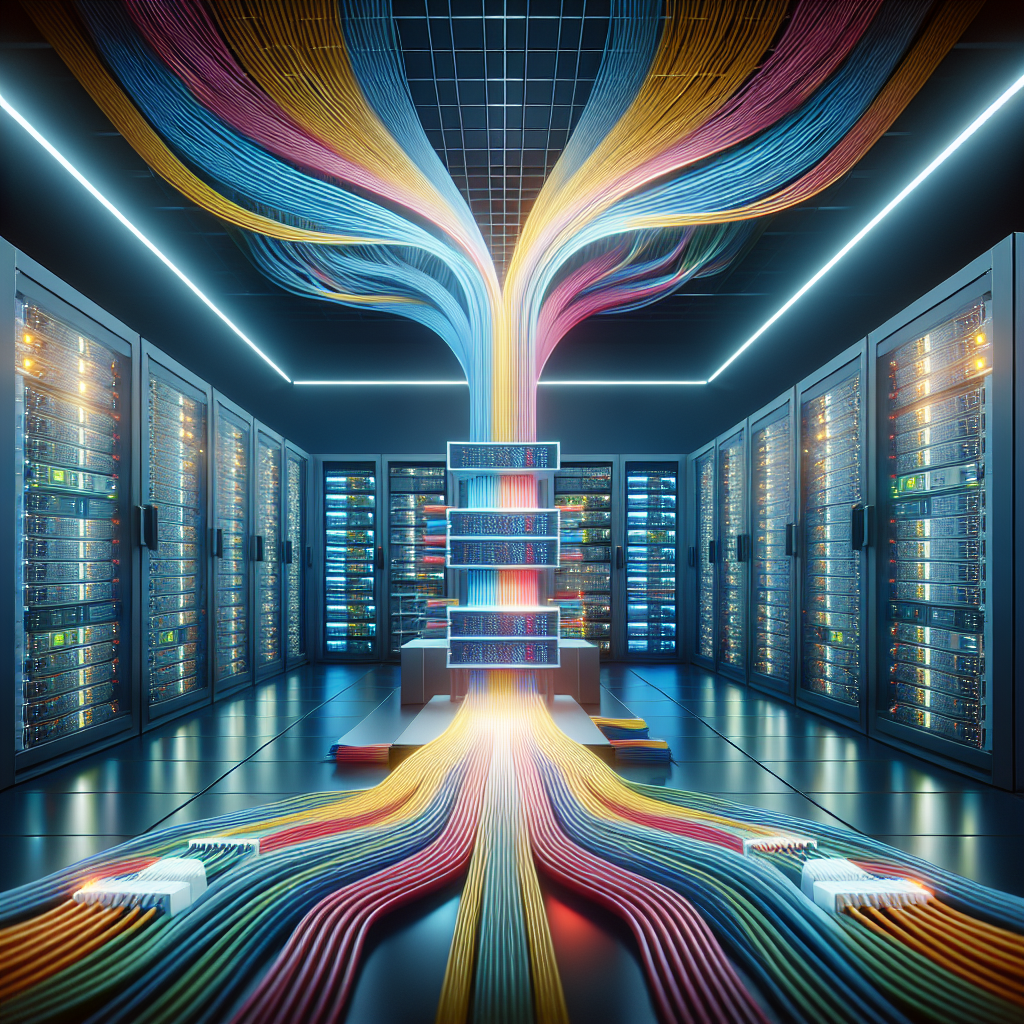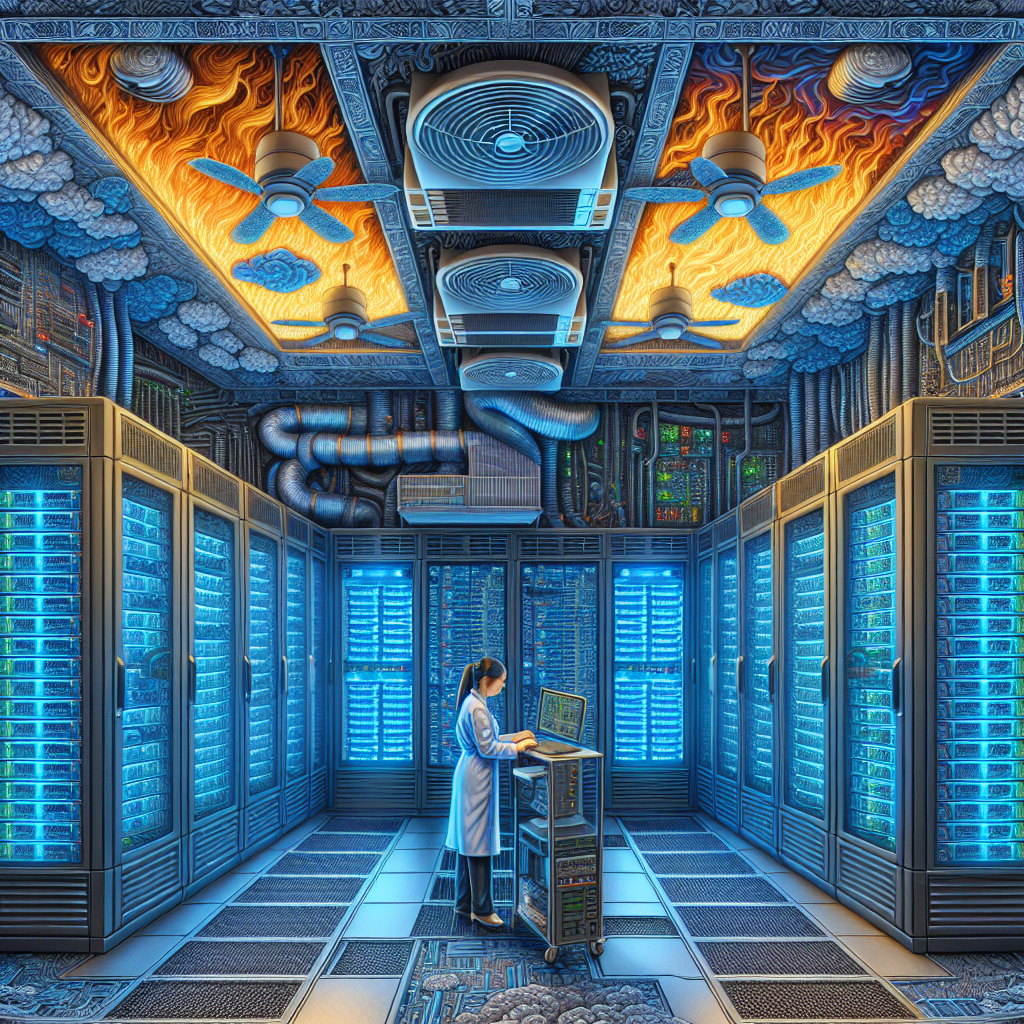Your cart is currently empty!
Tag: Efficient

The Road to a More Efficient Data Center: Tips and Techniques for Success
In today’s digital age, data centers play a crucial role in storing and managing vast amounts of data for businesses. With the exponential growth of data, it is more important than ever for data center managers to find ways to increase efficiency and optimize their operations. By implementing the right tips and techniques, data centers can streamline their processes, reduce costs, and improve overall performance.One key aspect of running an efficient data center is proper planning and design. It is essential to take into account factors such as power and cooling requirements, server density, and scalability when designing a data center. By carefully planning the layout and infrastructure of the data center, managers can ensure that it is able to handle the growing demands of their business.
Another important aspect of efficiency is regular maintenance and monitoring of the data center equipment. By conducting routine inspections and performing preventive maintenance, data center managers can identify and address issues before they escalate into major problems. Monitoring tools can also help track the performance of servers and identify areas for improvement.
Virtualization is another technique that can help improve efficiency in data centers. By consolidating multiple virtual servers onto a single physical server, businesses can reduce the number of physical servers needed, thereby lowering power consumption and cooling costs. Virtualization also allows for greater flexibility and scalability in managing resources.
In addition to virtualization, businesses can also benefit from adopting cloud computing services. By utilizing cloud storage and computing resources, businesses can offload some of their data center operations to third-party providers, reducing the need for additional hardware and maintenance costs. Cloud services also offer scalability and flexibility, allowing businesses to easily adjust their storage and computing needs as they grow.
Energy efficiency is another important consideration for data center managers looking to improve their operations. By implementing energy-efficient technologies such as LED lighting, hot aisle containment, and variable speed fans, data centers can reduce their carbon footprint and lower their energy bills. Renewable energy sources such as solar panels and wind turbines can also be used to power data centers, further reducing their environmental impact.
Overall, there are many tips and techniques that data center managers can implement to improve efficiency and optimize their operations. By carefully planning and designing the data center, conducting routine maintenance, utilizing virtualization and cloud services, and focusing on energy efficiency, businesses can create a more efficient and cost-effective data center that meets their growing data storage needs. With the right strategies in place, businesses can ensure that their data center is able to support their operations now and in the future.

Efficient Power Management: Key Considerations for Data Center Power Distribution
Efficient power management is a critical aspect of operating a data center. With the increasing demand for computing power and the rising costs of energy, organizations are constantly looking for ways to optimize their power usage. One key component of efficient power management is the distribution of power within the data center.When it comes to data center power distribution, there are several key considerations that organizations need to keep in mind in order to ensure efficiency and reliability. By taking these factors into account, organizations can reduce energy costs, improve performance, and minimize downtime.
One of the first considerations when it comes to data center power distribution is the design of the power distribution system. A well-designed power distribution system should be able to efficiently deliver power to all the components within the data center, while also providing redundancy and scalability. This means that organizations need to carefully plan the layout of their data center, ensuring that power is distributed evenly and that there are backup systems in place in case of a power outage.
Another key consideration for data center power distribution is the use of energy-efficient equipment. By using energy-efficient servers, switches, and other components, organizations can reduce their energy consumption and lower their overall operating costs. In addition, energy-efficient equipment can also help to reduce heat output, which can in turn lower cooling costs and improve overall system performance.
In addition to using energy-efficient equipment, organizations should also consider implementing power management software to help monitor and control power usage within the data center. Power management software can provide real-time data on power consumption, allowing organizations to identify areas where power is being wasted and make adjustments accordingly. By actively monitoring and managing power usage, organizations can optimize their power distribution and improve efficiency.
Finally, organizations should also consider the use of alternative power sources, such as renewable energy or energy storage systems, to supplement traditional power sources. By incorporating alternative power sources into their data center power distribution strategy, organizations can further reduce their reliance on fossil fuels and decrease their carbon footprint.
In conclusion, efficient power management is crucial for the operation of a data center. By carefully considering factors such as power distribution design, energy-efficient equipment, power management software, and alternative power sources, organizations can optimize their power usage, reduce costs, and improve overall performance. By taking these key considerations into account, organizations can ensure that their data center operates efficiently and reliably for years to come.

A Guide to Efficient Data Center Troubleshooting Techniques
Data centers are the backbone of modern businesses, providing the infrastructure needed to store and manage vast amounts of data. However, even the most well-designed data center can experience issues that can disrupt operations and lead to downtime. That’s why having efficient troubleshooting techniques in place is crucial to quickly identify and resolve any problems that may arise.Here are some key techniques to help you troubleshoot data center issues effectively:
1. Monitor performance metrics: Regularly monitoring performance metrics such as CPU usage, memory usage, network traffic, and disk space can help you identify potential issues before they escalate. Use monitoring tools to track these metrics in real-time and set up alerts to notify you of any abnormalities.
2. Conduct regular maintenance: Regular maintenance of hardware components such as servers, switches, and storage devices is essential to prevent issues from occurring. Ensure that firmware and software updates are applied promptly and that all equipment is functioning properly.
3. Check power and cooling systems: Power and cooling systems are critical components of a data center, and any issues with these systems can lead to downtime. Regularly check power sources, UPS systems, and cooling units to ensure they are functioning as intended.
4. Review logs and error messages: Logs and error messages can provide valuable insights into the root cause of data center issues. Review system logs, error messages, and alerts to identify patterns or trends that may indicate a larger problem.
5. Perform network diagnostics: Network issues are a common cause of data center downtime. Use network diagnostic tools to identify and troubleshoot connectivity issues, packet loss, latency, and other network-related problems.
6. Test backups and disaster recovery plans: Regularly test backups and disaster recovery plans to ensure they are working as intended. In the event of a data center outage, having a reliable backup and recovery strategy in place can help minimize downtime and data loss.
7. Collaborate with vendors and experts: In some cases, data center issues may require the expertise of vendors or specialists. Reach out to your equipment vendors or consult with data center experts to help troubleshoot and resolve complex issues.
By implementing these efficient troubleshooting techniques, you can minimize downtime, improve data center performance, and ensure the reliability of your infrastructure. Remember that proactive monitoring, regular maintenance, and collaboration with experts are essential components of a successful data center troubleshooting strategy.

The Importance of Proper Data Center Cabling: Ensuring Efficient and Reliable Connectivity
In today’s digital age, data centers play a crucial role in storing, processing, and transmitting vast amounts of data. As the backbone of modern technology infrastructure, data centers must be equipped with proper cabling to ensure efficient and reliable connectivity.Proper data center cabling is essential for several reasons. First and foremost, it ensures the seamless transmission of data between servers, storage devices, and networking equipment. Without proper cabling, data transfer speeds can be significantly reduced, leading to delays in accessing critical information and applications. This can have a detrimental impact on business operations and productivity.
In addition to speed, proper cabling also ensures reliability. Data centers are often mission-critical environments where even a momentary loss of connectivity can have serious consequences. Proper cabling helps minimize the risk of downtime by providing a stable and resilient network infrastructure.
Furthermore, proper cabling plays a crucial role in ensuring scalability and flexibility. As data center requirements evolve and grow, having a well-organized cabling system makes it easier to add new equipment or reconfigure existing setups. This not only reduces costs but also minimizes disruptions to operations.
Proper data center cabling also contributes to improved energy efficiency. By reducing cable clutter and ensuring proper airflow, cabling can help optimize cooling systems and reduce energy consumption. This not only lowers operational costs but also contributes to a more sustainable and environmentally friendly data center.
In conclusion, proper data center cabling is essential for ensuring efficient and reliable connectivity. By investing in high-quality cabling infrastructure, organizations can improve data transfer speeds, enhance reliability, facilitate scalability, and boost energy efficiency. Ultimately, proper cabling is a critical component of a well-functioning data center that supports the smooth operation of modern technology infrastructure.

The Importance of Efficient Data Center Cooling Systems
Data centers play a crucial role in the modern digital world, serving as the backbone of our information-driven society. They house the servers, networking equipment, and storage systems that power the internet, cloud computing, and other digital services. As the demand for data processing and storage continues to grow, data centers are becoming increasingly important.One of the key challenges facing data centers is managing the heat generated by the equipment. The servers and other hardware in a data center produce a significant amount of heat, and if not properly cooled, they can overheat and malfunction, leading to downtime and data loss. This is why efficient data center cooling systems are essential to ensuring the reliability and performance of these critical facilities.
Efficient data center cooling systems help to maintain the temperature within the data center at optimal levels, ensuring that the equipment operates at peak efficiency. This not only prolongs the lifespan of the hardware but also reduces energy consumption and operating costs. Inefficient cooling systems can lead to wasted energy and increased cooling expenses, which can have a significant impact on the overall operating costs of a data center.
There are several different types of cooling systems that can be used in data centers, including air-based systems, liquid-based systems, and hybrid systems that combine both air and liquid cooling. Each type of cooling system has its own advantages and disadvantages, and the choice of system will depend on factors such as the size of the data center, the amount of heat generated by the equipment, and the budget constraints of the organization.
In recent years, there has been a growing trend towards more energy-efficient cooling systems in data centers. This is driven by a combination of factors, including rising energy costs, increasing environmental concerns, and the need to reduce carbon emissions. Energy-efficient cooling systems not only help to reduce operating costs but also have a positive impact on the environment, making them a win-win solution for data center operators.
In conclusion, efficient data center cooling systems are essential for the reliable and cost-effective operation of data centers. By investing in energy-efficient cooling systems, data center operators can reduce operating costs, prolong the lifespan of their equipment, and minimize their environmental impact. As the demand for data processing and storage continues to grow, the importance of efficient cooling systems in data centers will only increase.
The Importance of Regular Maintenance for Efficient Storage
Efficient storage is essential for any business or organization looking to maximize space and stay organized. However, just having storage solutions in place is not enough – regular maintenance is key to ensuring that your storage systems remain efficient and effective over time. In this article, we will discuss the importance of regular maintenance for efficient storage and provide some tips on how to keep your storage systems in top condition.One of the main reasons why regular maintenance is important for efficient storage is to prevent damage and wear and tear on your storage systems. Over time, storage shelves, racks, and containers can become worn down from heavy use, leading to potential safety hazards and reduced storage capacity. By conducting regular maintenance checks and repairs, you can address any issues early on before they escalate into bigger problems.
Regular maintenance also helps to ensure that your storage systems are being used to their full potential. By regularly organizing and decluttering your storage spaces, you can maximize the available storage space and make it easier to access and locate items when needed. This can help improve efficiency in your operations and save time and resources in the long run.
Furthermore, regular maintenance can help extend the lifespan of your storage systems. By keeping your storage solutions clean and well-maintained, you can prevent rust, corrosion, and other forms of damage that can shorten the lifespan of your storage equipment. This can ultimately save you money by reducing the need for frequent replacements or repairs.
To keep your storage systems running smoothly, here are some tips for regular maintenance:
1. Schedule regular inspections: Set aside time to inspect your storage systems on a regular basis. Look for any signs of damage, wear and tear, or safety hazards that need to be addressed.
2. Clean and organize regularly: Keep your storage spaces clean and organized by regularly decluttering and reorganizing items. This can help maximize storage space and make it easier to find and access items when needed.
3. Address issues promptly: If you notice any issues with your storage systems, such as loose bolts or damaged shelving, address them promptly to prevent further damage and ensure the safety of your storage equipment.
4. Train staff on proper maintenance: Make sure that your staff are trained on proper maintenance procedures for your storage systems. This can help prevent accidents and ensure that your storage systems remain in good condition.
In conclusion, regular maintenance is essential for efficient storage systems. By conducting regular inspections, cleaning and organizing your storage spaces, and addressing issues promptly, you can ensure that your storage systems remain in top condition and continue to support your operations effectively. By investing time and resources into maintenance, you can maximize the lifespan and efficiency of your storage solutions, ultimately saving you money and improving productivity in the long run.
